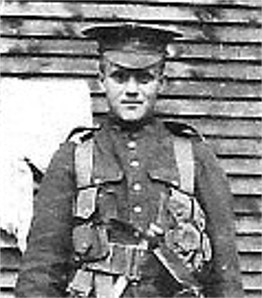|
Mar 18, 1896
|
Born in Colborne, Ontario to William Arthur and
Effie May (nee McLaughlin) Mutton
|
|
Mar 18, 1914
|
Enlisted in the 11th Battalion, Royal
Irish Fusiliers in Vancouver, British Columbia.
|
|
Sep 18, 1914
|
Discharged from the 11th Battalion in
Valcartier, Quebec as being “Inefficient”.
|
|
Nov 6, 1914
|
Attested into the 21st Battalion in Kingston, Ontario
Ø Number 59694 (temporary number 326)
Ø Next of kin given as WA Mutton, father, Colborne, Ontario
Ø Previous occupation given as Farmer
o Later noted as Student
Ø Previous military experience given as 11th Battalion,
Royal Irish Fusiliers of Canada
Ø Religion given as Wesleyan
Ø Posted to 6 Platoon, “C” Company
o This was later reorganized into 6 Platoon, “B” Company
The 21st Battalion trained in the Kingston, Ontario
area through the winter of 1914-15.
|
|
May 6, 1915
|
Embarked the RMS Metagama in Montreal, Quebec

|
|
May 15, 1915
|
Disembarked in Devonport, England and the
battalion proceeded to the West Sandling Camp, near Hythe, Kent to continue
training
|
|
From Ordinary Heroes, the history of the 21st Battaliion by Stephen Nichol
page 11
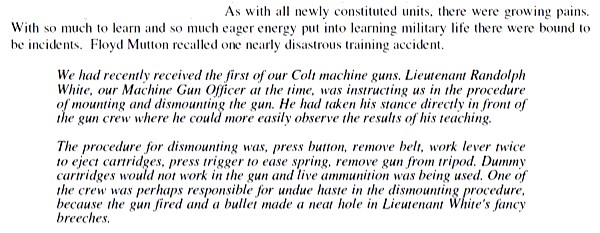
|
|
Sep 14, 1915
|
Embarked the St. Seiriol in Folkestone
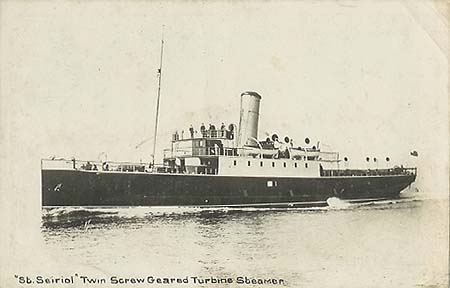
|
|
Sep 15, 1915
|
Disembarked in Boulogne, France and the battalion
proceeded to St. Omer
|
|
Feb 14, 1916
|
Attached to the 11th Canadian Labour
Battalion for duty
|
|
Feb 15, 1916
|
Attached to the CORCC (Canadian Overseas Railway
Construction Corps) to help build the rail line between Poperinge and Kemmel
Hill in Belgium
|
|
Feb 29, 1916
|
Admitted to the No 5 CFA (Canadian Field
Ambulance) with a diagnosis that reads Influenza. He was transferred the same day to the
Division Rest Station at the No. 6 Canadian Field Ambulance
|
|
Mar 6, 1916
|
Transferred to the North Midland Casualty Clearing Station
|
|
Mar 14, 1916
|
Discharged to duty from the rest station and
rejoined the Railway Construction Corps
|
|
Apr 20, 1916
|
Ceased to be attached and rejoined the 21st
Battalion at the front near Voormezeele, Belgium
|
|
Sep 15, 1916
|
During the attack on the Sugar Factory south of
Courcelette, France, Private Mutton was employed as a Stretcher Bearer and
while looking for wounded during the morning attack, he received a shrapnel
wound to his right hip that completely immobilized him. He lay wounded in no man’s land all of that
day and through the night.
|
|
Sep 16, 1916
|
In the morning he was located and evacuated to
the No. 6 Canadian Field Ambulance for first aid before being transported to
the No. 44 CCS (Casualty Clearing Station).
|
|
Sep 18, 1916
|
After being assessed, he was placed on the No. 18
AT (Ambulance Train) and transferred to the No. 1 Canadian General Hospital
in Etaples, France where 2 different surgeries were performed to repair hip
damage
|
|
Oct 17, 1916
|
Invalided to England aboard the Hospital Ship
Stad Antwerpen

On arrival in England, he was admitted to the
Norfolk and Norwich Military Hospital where additional surgery was performed
Transferred to the CCAC (Canadian Casualty
Assembly Centre) for pay purposes while in hospital
|
|
Jan 2, 1917
|
Transferred to the East Dereham Hospital
|
|
Mar 10, 1917
|
Transferred to the EORD (Eastern Ontario
Regimental Depot) for pay purposes while in hospital
|
|
Apr 16, 1917
|
Transferred to the Canadian Convalescent Hospital
in Woodcote Park, Epsom
|
|
Jun 11, 1917
|
Invalided to Canada and embarked the Hospital
Ship Araguaya in Liverpool

Noted on the embarkation roll as using crutches
|
|
Jun 22, 1917
|
Disembarked in Halifax, Nova Scotia and proceeded
to Kingston, Ontario where he was admitted to the military convalescent home
|
|
Jul 10, 1917
|
Admitted to the Queen’s Military Hospital in
Kingston
|
|
Jul 13, 1917
|
To be treated as an out patient of the Queen’s
Military Hospital
|
|
Jul 30, 1917
|
Admitted to the Queen’s Military Hospital
|
|
Aug 13, 1917
|
To be treated as an out patient of the Queen’s
Military Hospital
|
|
Aug 28, 1917
|
Admitted to the Queen’s Military Hospital
|
|
Oct 31, 1917
|
Surgery performed to repair muscle damage
|
|
Dec 21, 1917
|
To be treated as an out patient of the Queen’s
Military Hospital
|
|
Apr 18, 1918
|
Taken On Strength the MHCC (Military Hospital
Commission of Canada) for pay purposes while in hospital
|
|
Jul 2, 1918
|
Medical Board in Kingston notes
Ø Suffers from the effects of
shrapnel wounds to his right hip
Ø He cannot support his weight
on his right leg
Ø If he sits or lies on his
right hip he suffers from pain and numbness
Ø The region of his wound is
very tender
Ø Walking is extremely difficult
and takes him about an hour to walk ½ mile
Ø Has to wear a Thomas Leg Splint
with straps over his shoulder to help bear his weight and requires a cane to
walk
Ø Board recommends he be
discharged from military service and that he be supplied with any necessary
splints for his disability
|
|
A Thomas Splint
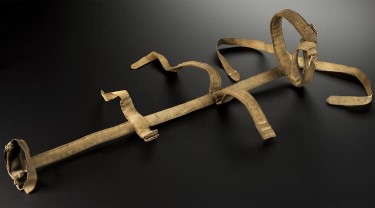
|
|
Jul 6, 1918
|
Discharged from hospital to the Military District
No. 3 Casualty Company in Kingston
Prior to his discharge, a special long hip splint
and special boots were supplied and it was noted that he could walk slowly
with the aid of a cane
|
|
Jul 19, 1918
|
Discharged from the CEF in Kingston, Ontario
Ø Rank on discharge Private
Ø Entitled to War Service Badge
Class “A”
Ø Proposed residence on
discharge Colborne, Ontario
Following the end of the war, the 1914-15 Star,
British War Medal and Victory Medals were sent to him at Hilton, Ontario
|
|
Mar 14, 1923
|
Married to Sarah Jane Sauva in Brighton, Ontario
|
|
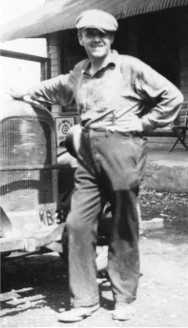
|
|
Sep 23, 1974
|
Floyd Arthur Mutton’s son reported to Veterans
Affairs Canada that his father died while a patient in the Trenton Memorial
Hospital, Trenton Ontario, on this date and was buried in the Shiloh
Cemetery, Colborne, Ontario
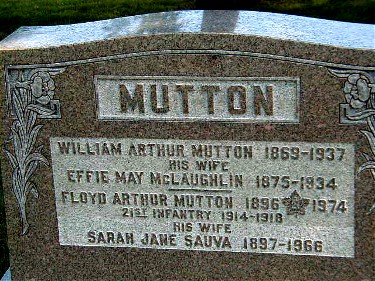
|
|
